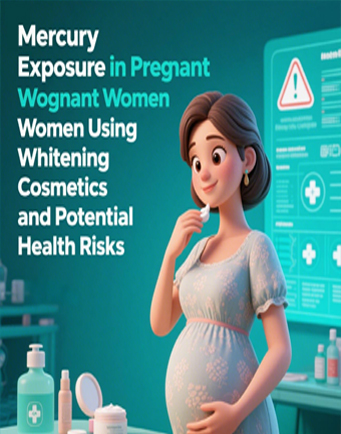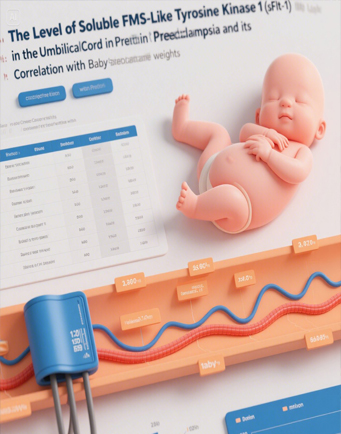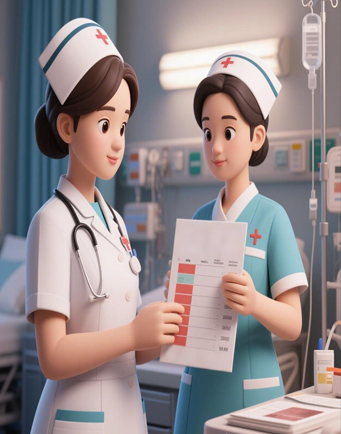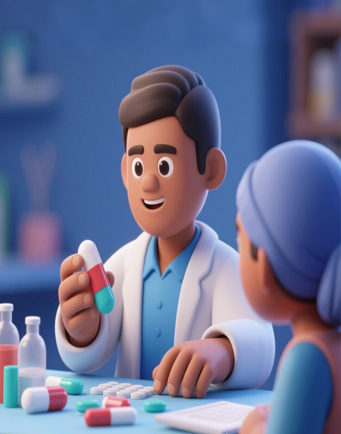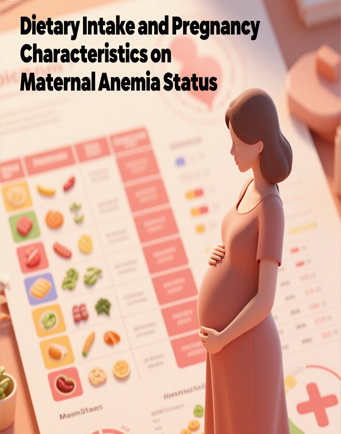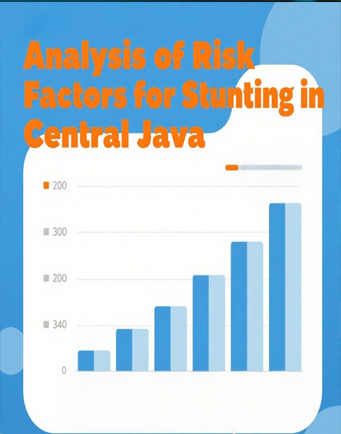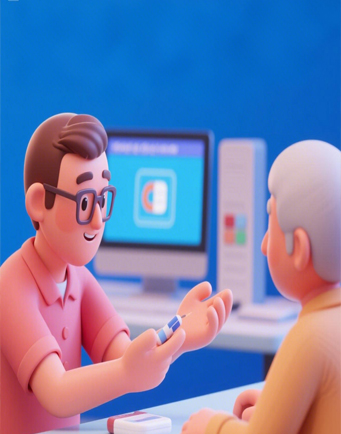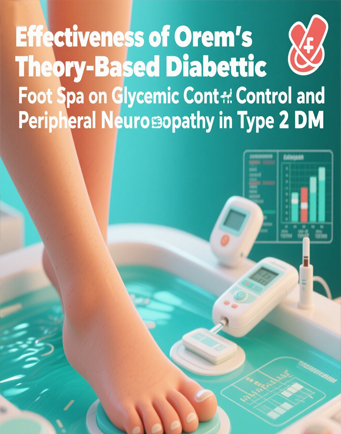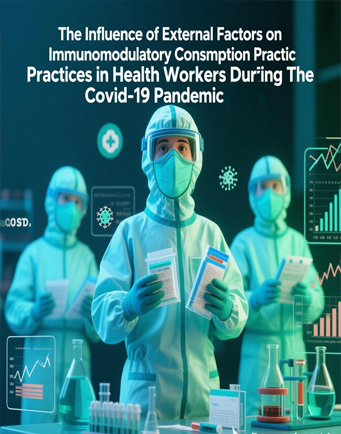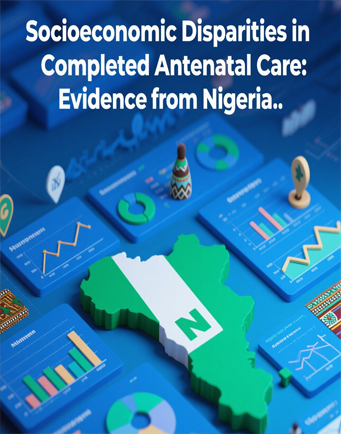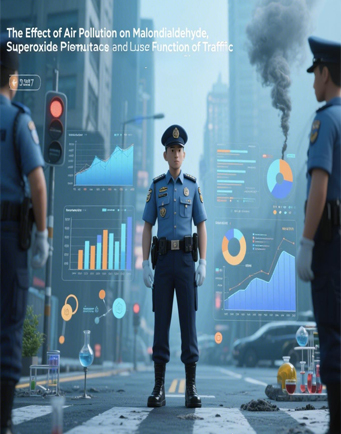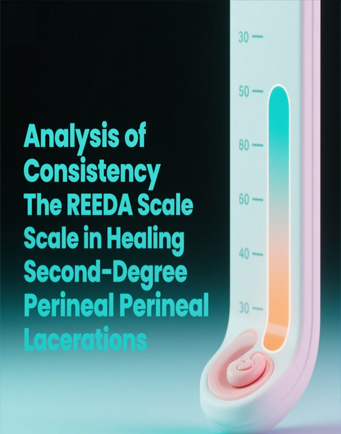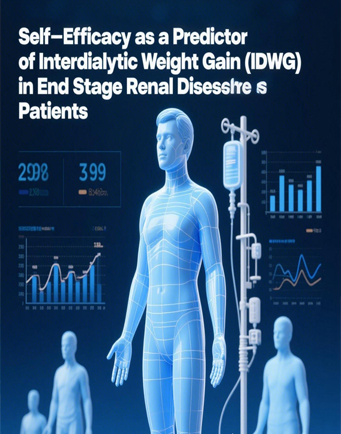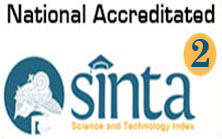Obesity Among Female Lecturers During the Covid-19 Pandemic in Aceh, Indonesia: A Retrospective Study
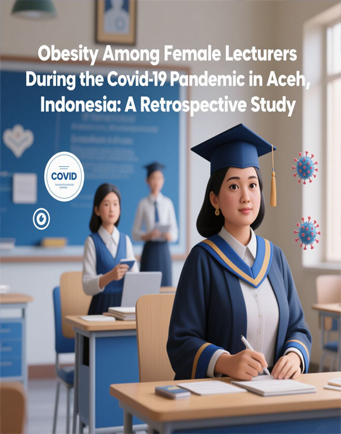
Downloads
The Covid-19 pandemic has led to changes in uncontrolled consumption patterns and decreased physical activity among female teaching staff members. Therefore, they tend to gain weight, leading to non-communicable diseases (NCDs) and comorbidities. In support of the government’s efforts, the prevalence of obesity must be reduced through healthy behavioral changes. This study aimed to identify the cause of obesity among female lecturers in Aceh during the Covid-19 pandemic. This study used a case-control design and was conducted in Aceh Province from March to June 2021. The sample consisted of 65 female lecturers (obese) and 65 controls (non-obese), obtained by purposive sampling. Physical activity, NCDs history, anthropometric, BMI, and blood pressure data were collected and analyzed using the chi-square test at a 95% confidence interval (CI). Results found that Female lecturers in Aceh had a higher prevalence of obesity (55.4%). This was because of age > 45 years (p= 0.013; AOR= 2.42), junk food consumption (p= 0.017; AOR= 2.33), not on a diet (p= 0.034; AOR= 2.13), and less physical activity (p= 0.012; AOR= 2.79). During the Covid-19 pandemic, neither income nor pickle consumption were risk factors for obesity (p > 0.05). However, arthritis (p= 0.034; AOR= 2.12) and hypertension (p= 0.003; AOR= 2.93) were present in a high proportion of obese female lecturers (p < 0.05). Additionally, the risk of obesity during the Covid-19 pandemic in Aceh was unrelated (p > 0.05) to diabetes, high cholesterol, and heart disease. In conclusion, obesity among female lecturers in Aceh was caused by risk factors such as age, junk food consumption, and lack of physical activity during the Covid-19 pandemic. It is also associated with NCDs including arthritis and hypertension. It is hoped that avoiding obesity will prevent the emergence of non-communicable diseases.
Almandoz, J. P., Xie, L., Schellinger, J. N., Mathew, M. S., Gazda, C., Ofori, A., ... & Messiah, S. E. (2020). Impact of COVID‐19 stay‐at‐home orders on weight‐related behaviours among patients with obesity. Clinical obesity, 10(5), e12386. https://doi.org/10.1111/cob.12386
Badan Penelitian dan Pengembangan Kesehatan. (2019). Laporan Nasional Riskesdas Tahun 2018. Jakarta: Badan Penelitian dan Pengembangan Kesehatan. Retrieved from: https://www.litbang.kemkes.go.id/laporan-riset-kesehatan-dasar-riskesdas/
Bhurosy, T., & Jeewon, R. (2014). Overweight and obesity epidemic in developing countries: a problem with diet, physical activity, or socioeconomic status?. The Scientific World Journal, 2014, 964236. https://doi.org/10.1155/2014/964236
Buch, A., Carmeli, E., Boker, L. K., Marcus, Y., Shefer, G., Kis, O., ... & Stern, N. (2016). Muscle function and fat content in relation to sarcopenia, obesity and frailty of old age—An overview. Experimental gerontology, 76, 25-32. https://doi.org/10.1016/j.exger.2016.01.008
Canaud, B., Kooman, J., Selby, N. M., Taal, M., Francis, S., Kopperschmidt, P., ... & Titze, J. (2019). Sodium and water handling during hemodialysis: new pathophysiologic insights and management approaches for improving outcomes in end-stage kidney disease. Kidney International, 95(2), 296-309. https://doi.org/10.1016/j.kint.2018.09.024
Cuevas, A., Lim, S., Ryan, D., Clément, K., & Heymsfield, S. (2020). In response to the current COVID-19 Pandemic, the World Obesity Federation and colleagues launched a series of webinars on COVID-19 & Obesity. World Obesity Live – Covid-19 And Obesity Webinar Series. Retrieved from: https://www.worldobesity.org/news/world-obesity-live-covid-19-and-obesity-webinar-series
Deng, S. Q., & Peng, H. J. (2020). Characteristics of and public health responses to the coronavirus disease 2019 outbreak in China. Journal of clinical medicine, 9(2), 575. https://doi.org/10.3390/jcm9020575
Di Renzo, L., Gualtieri, P., Pivari, F., Soldati, L., Attinà, A., Cinelli, G., ... & De Lorenzo, A. (2020). Eating habits and lifestyle changes during COVID-19 lockdown: an Italian survey. Journal of translational medicine, 18, 1-15. https://doi.org/10.1186/s12967-020-02399-5
Driggin, E., Madhavan, M. V., Bikdeli, B., Chuich, T., Laracy, J., Biondi-Zoccai, G., ... & Parikh, S. A. (2020). Cardiovascular considerations for patients, health care workers, and health systems during the COVID-19 pandemic. Journal of the American College of cardiology, 75(18), 2352-2371. https://doi.org/10.1016/j.jacc.2020.03.031
Elmajnoun, H. K., Elhag, M. R., Mohamed, H., Haris, P. I., & Abu-Median, A. B. (2020). Ramadan 2020 and beyond in the midst of the COVID-19 pandemic: challenges and scientific evidence for action. Sudan Journal of Medical Sciences, 15(2), 85-110. Retrieved from: https://www.ajol.info/index.php/sjms/article/view/200472
Engle, S., Stromme, J., & Zhou, A. (2020). Staying at home: mobility effects of covid-19. SSRN. http://dx.doi.org/10.2139/ssrn.3565703
Fang, Y., Nie, Y., & Penny, M. (2020). Transmission dynamics of the COVID‐19 outbreak and effectiveness of government interventions: A data‐driven analysis. Journal of Medical Virology, 92(6), 645–659. https://doi.org/10.1002/jmv.25750
Govind, K., Ratchagar, I., & Ruby Violet Rani, E. (2014). Job Stress in Relation to Mental Health among the College Teachers. Annamalai International Journal of Business Studies & Research, 6(1), p.35.
Greiw, A., Gad, Z., Mandil, A., Wagdi, M., & Elneihoum, A. (2010). Risk factors for cardiovascular diseases among school teachers in Benghazi, Libya. Ibnosina Journal of Medicine and Biomedical Sciences, 2(4), 168-177. https://doi.org/10.4103/1947-489X.210991
Gupta, R., Ghosh, A., Singh, A. K., & Misra, A. (2020). Clinical considerations for patients with diabetes in times of COVID-19 epidemic. Diabetes & Metabolic Syndrome, 14(3), 211–212. https://doi.org/10.1016/j.dsx.2020.03.002
Hong, S. A., Peltzer, K., Lwin, K. T., & Aung, L. S. (2018). The prevalence of underweight, overweight and obesity and their related socio-demographic and lifestyle factors among adult women in Myanmar, 2015-16. PloS one, 13(3), e0194454. https://doi.org/10.1371/journal.pone.0194454
Jiang, S., Lu, W., Zong, X., Ruan, H., & Liu, Y. (2016). Obesity and hypertension. Experimental and Therapeutic Medicine, 12(4), 2395–2399. https://doi.org/10.3892/etm.2016.3667
Karikatti, S. S., Naik, V. A., Hallappanavar, A. B., & Mallapur, M. D. (2016). Assessing Risk of Cardiovascular Disease among School Teachers: A High Risk Approach at School Settings. Indian Journal of Public Health Research & Development, 7(2), 162-167. https://doi.org/10.5958/0976-5506.2016.00087.5
Karin, O., Bar-On, Y. M., Milo, T., Katzir, I., Mayo, A., Korem, Y., ... & Alon, U. (2020). Adaptive cyclic exit strategies from lockdown to suppress COVID-19 and allow economic activity. MedRxiv, 3(April), 1–22. https://doi.org/10.1101/2020.04.04.20053579
Khotibuddin, M. (2017). Hubungan depresi dan perilaku makan terhadap berat badan lebih mahasiswa kedokteran. Mutiara Medika: Jurnal Kedokteran Dan Kesehatan, 17(1), 42–50. Retrieved from: https://journal.umy.ac.id/index.php/mm/article/view/3682
Kulkarni, K., Karssiens, T., Kumar, V., & Pandit, H. (2016). Obesity and osteoarthritis. Maturitas, 89, 22–28. https://doi.org/10.1016/j.maturitas.2016.04.006
Lescure, F. X., Bouadma, L., Nguyen, D., Parisey, M., Wicky, P. H., Behillil, S., ... & Yazdanpanah, Y. (2020). Clinical and virological data of the first cases of COVID-19 in Europe: a case series. The Lancet Infectious Diseases, 20(6), 697-706. https://doi.org/10.1016/S1473-3099(20)30200-0
Mahamood, A., Vijayakumar, S., Pasula, S., Adepu, K., & Laxmi, A. (2013). Relationship Between Waist Circumference and Body Mass Index of Hypertensionin Teaching Staff of Government and Private Schools. International Journal of Pharmaceutical Sciences Letters, 3(3), 218–222.
Manolis, A. S. (2016). You are what you eat, hence curtail saturated and trans fats, free sugars and salt. Hospital Chronicles, 11(2), 65–76. https://doi.org/10.2015/hc.v11i2.758
Min, J., Zhao, Y., Slivka, L., & Wang, Y. (2018). Double burden of diseases worldwide: Coexistence of undernutrition and overnutrition‐related non‐communicable chronic diseases. Obesity Reviews, 19(1), 49–61. https://doi.org/10.1111/obr.12605
Misra, A., Singhal, N., & Khurana, L. (2010). Obesity, the metabolic syndrome, and type 2 diabetes in developing countries: role of dietary fats and oils. Journal of the American College of Nutrition, 29(sup3), 289S-301S. https://doi.org/10.1080/07315724.2010.10719844
Mobasheri, A. (2020). COVID-19, osteoarthritis and women's health. Case Reports in Women's Health, e00207. https://doi.org/10.1016/j.crwh.2020.e00207
Monica, S. J., & John, S. (2018). Risk Factors Contributing to Dyslipidemia among Female School Teachers. Journal of Krishna Institute of Medical Sciences (JKIMSU), 7(3), 48-58.
Monica, S. J., & John, S. (2018). Risk of Obesity Among Female School Teachers and its Associated Health Problems. Current Research in Nutrition and Food Science Journal, 6(2), 404–411. http://dx.doi.org/10.12944/CRNFSJ.6.2.15
Mozaffarian, D., Hao, T., Rimm, E. B., Willett, W. C., & Hu, F. B. (2011). Changes in diet and lifestyle and long-term weight gain in women and men. New England journal of medicine, 364(25), 2392-2404. https://doi.org/10.1056/NEJMoa1014296
Ng, Y., Li, Z., Chua, Y. X., Chaw, W. L., Zhao, Z., Er, B., Pung, R., Chiew, C. J., Lye, D. C., & Heng, D. (2020). Evaluation of the effectiveness of surveillance and containment measures for the first 100 patients with COVID-19 in Singapore--January 2–February 29, 2020. MMWR Morb Mortal Wkly Rep, 69, 307-311. http://dx.doi.org/10.15585/mmwr.mm6911e1
Rachmi, C. N., Li, M., & Baur, L. A. (2017). Overweight and obesity in Indonesia: prevalence and risk factors—a literature review. Public Health, 147(6), 20–29. https://doi.org/10.1016/j.puhe.2017.02.002
Rawal, L. B., Kanda, K., Mahumud, R. A., Joshi, D., Mehata, S., Shrestha, N., Poudel, P., Karki, S., & Renzaho, A. (2018). Prevalence of underweight, overweight and obesity and their associated risk factors in Nepalese adults: data from a Nationwide Survey, 2016. PloS One, 13(11), e0205912. https://doi.org/10.1371/journal.pone.0205912
Rios, S. da S., Chen, A. C. R., & Chen, J. R. (2020). COVID-19: Does lifestyle intervention improve the course of the disease? A case series and literature review. Research Square, 1–16.
Riyadina, W., Julianti, E. D., Arfines, P. P., Nurhidayati, N., Irawan, I. R., & Samsudin, M. (2022). Pengendalian Obesitas Menurut Status Komorbid Di Masa Pandemi COVID-19. Penelitian Gizi dan Makanan (The Journal of Nutrition and Food Research), 45(2), 59-72. Retrieved from: https://pgm.persagi.org/index.php/pgm/article/view/690
Rocha, S. V., Cardoso, J. P., Santos, C. A. dos, Munaro, H. L. R., Vasconcelos, L. R. C., & Petroski, E. L. (2015). Overweight/obesity in teachers: prevalence and associated factors. Revista Brasileira de Cineantropometria & Desempenho Humano, 17(4), 450–459. https://doi.org/10.5007/1980-0037.2015v17n4p450
Ruan, Q., Yang, K., Wang, W., Jiang, L., & Song, J. (2020). Clinical predictors of mortality due to COVID-19 based on an analysis of data of 150 patients from Wuhan, China. Intensive Care Medicine, 46(5), 846–848. https://doi.org/10.1007/s00134-020-06028-z
Simbolon, D., Yorita, E., & Talib, R. A. (2019). The risk of hypertension in adulthood as a consequence of adolescent obesity. Kesmas: Jurnal Kesehatan Masyarakat Nasional (National Public Health Journal), 14(1), 28-36. https://doi.org/10.21109/kesmas.v14i1.2723
Sumar, W. T. (2015). Implementasi Kesetaraan Gender Dalam Bidang Pendidikan. Jurnal Musawa IAIN Palu, 7(1), 158–182.
Taghrir, M. H., Akbarialiabad, H., & Marzaleh, M. A. (2020). Efficacy of mass quarantine as leverage of health system governance during COVID-19 outbreak: a mini policy review. Archives of Iranian Medicine, 23(4), 265–267. https://doi.org/10.34172/aim.2020.08
Trisna, I., & Hamid, S. (2009). Faktor-faktor yang berhubungan dengan obesitas sentral pada wanita dewasa (30-50 tahun) di Kecamatan Lubuk Sikaping Tahun 2008. Jurnal Kesehatan Masyarakat Andalas, 3(2), 68–71. Retrieved from: https://jurnal.fkm.unand.ac.id/index.php/jkma/article/view/62
Tuwu, D. (2018). Peran Pekerja Perempuan Dalam Memenuhi Ekonomi Keluarga: Dari Peran Domestik Menuju Sektor Publik. Al-Izzah: Jurnal Hasil-Hasil Penelitian, 13(1), 63–76.
WHO. (2021). Obesity. World Health Organization (WHO). Retrieved from: https://www.who.int/news-room/facts-in-pictures/detail/6-facts-on-obesity
Widyawati, W. (2020). Komorbid jadi penyebab terbanyak kematian pasien COVID-19. Kementerian Kesehatan Republik Indonesia. Jakarta: Kementerian Kesehatan Republik Indonesia. Retrieved from: https://sehatnegeriku.kemkes.go.id/baca/umum/20201021/3935469/komorbid-jadi-penyebab-terbanyak-kematian-pasien-covid-19/
Wills, A. K., Black, S., Cooper, R., Coppack, R. J., Hardy, R., Martin, K. R., Cooper, C., & Kuh, D. (2012). Life course body mass index and risk of knee osteoarthritis at the age of 53 years: evidence from the 1946 British birth cohort study. Annals of the Rheumatic Diseases, 71(5), 655–660. https://doi.org/10.1136/ard.2011.154021
Zennaro, M.-C., Boulkroun, S., & Fernandes-Rosa, F. (2015). An update on novel mechanisms of primary aldosteronism. Journal of Endocrinology, 224(2), R63–R77. https://doi.org/10.1530/JOE-14-0597
Copyright (c) 2025 JURNAL INFO KESEHATAN

This work is licensed under a Creative Commons Attribution-NonCommercial-ShareAlike 4.0 International License.
Copyright notice
Ownership of copyright
The copyright in this website and the material on this website (including without limitation the text, computer code, artwork, photographs, images, music, audio material, video material and audio-visual material on this website) is owned by JURNAL INFO KESEHATAN and its licensors.
Copyright license
JURNAL INFO KESEHATAN grants to you a worldwide non-exclusive royalty-free revocable license to:
- view this website and the material on this website on a computer or mobile device via a web browser;
- copy and store this website and the material on this website in your web browser cache memory; and
- print pages from this website for your use.
- All articles published by JURNAL INFO KESEHATAN are licensed under the Creative Commons Attribution 4.0 International License. This permits anyone to copy, redistribute, remix, transmit and adapt the work provided the original work and source is appropriately cited.
JURNAL INFO KESEHATAN does not grant you any other rights in relation to this website or the material on this website. In other words, all other rights are reserved.
For the avoidance of doubt, you must not adapt, edit, change, transform, publish, republish, distribute, redistribute, broadcast, rebroadcast or show or play in public this website or the material on this website (in any form or media) without appropriately and conspicuously citing the original work and source or JURNAL INFO KESEHATAN prior written permission.
Permissions
You may request permission to use the copyright materials on this website by writing to jurnalinfokesehatan@gmail.com.
Enforcement of copyright
JURNAL INFO KESEHATAN takes the protection of its copyright very seriously.
If JURNAL INFO KESEHATAN discovers that you have used its copyright materials in contravention of the license above, JURNAL INFO KESEHATAN may bring legal proceedings against you seeking monetary damages and an injunction to stop you using those materials. You could also be ordered to pay legal costs.
If you become aware of any use of JURNAL INFO KESEHATAN copyright materials that contravenes or may contravene the license above, please report this by email to jurnalinfokesehatan@gmail.com
Infringing material
If you become aware of any material on the website that you believe infringes your or any other person's copyright, please report this by email to jurnalinfokesehatan@gmail.com.


